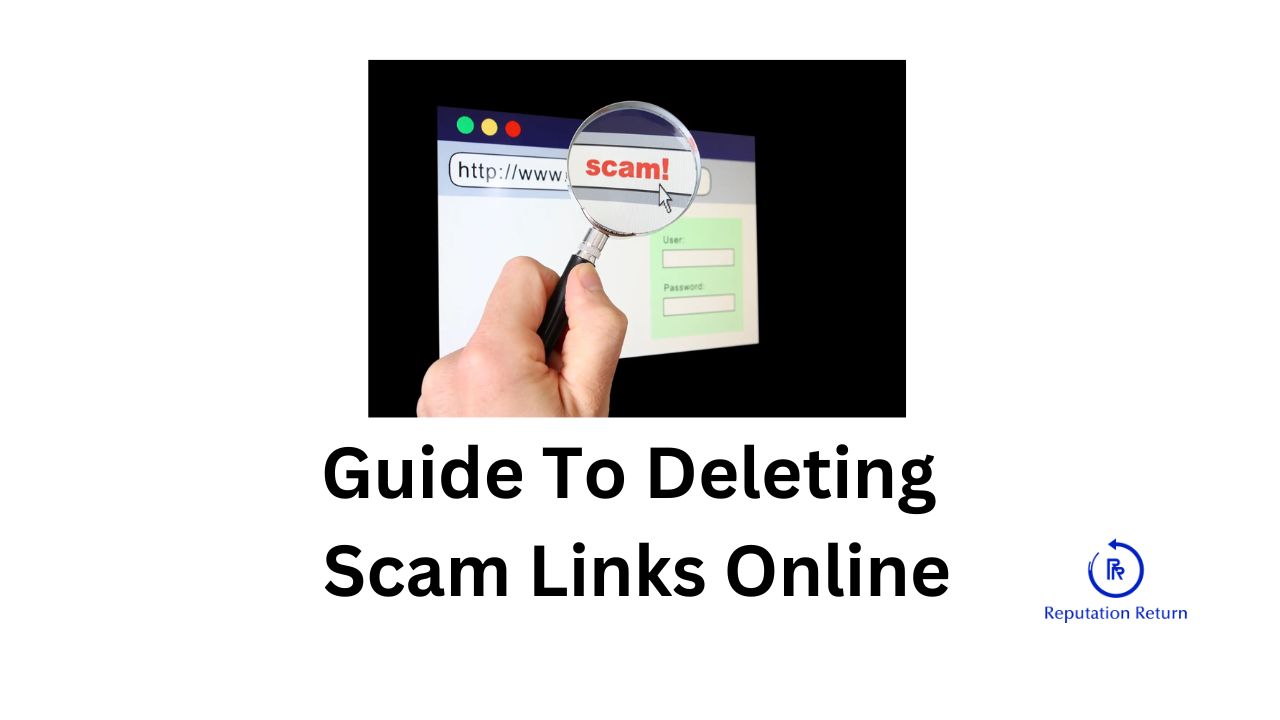Guide to Deleting Scam Links Online: Protecting Your Reputation
Your online presence holds significant weight in personal and professional spheres.
One negative element that can severely impact this presence is scam links. These malicious links not only pose security risks but can also damage your reputation if they are associated with your name or business. This comprehensive guides you to identifying and deleting scam links online, protecting your reputation, and understanding when it might be time to call in professional help like Reputation Return.
Understanding Scam Links
Scam links are URLs designed to deceive users, often leading them to fraudulent websites. These can result in stolen personal information, financial loss, or malware infections. They can appear in various forms:
• Phishing Links: These mimic legitimate websites to steal login credentials.
• Malware Links: These infect devices with viruses or spyware.
• Fake Offers: These lure users with fake deals or prizes.
Scam links can appear in emails, social media posts, comments, or even embedded in legitimate websites. When these links are associated with your name or business, they can create an illusion of your involvement in fraudulent activities, severely damaging your credibility and trustworthiness.
The Impact on Your Reputation
Scam links linked to your name or business can have devastating effects:
1 Loss of Trust: If customers or clients encounter scam links through your platforms, they might lose trust in your brand.
2 Legal Implications: Being associated with scam activities can lead to legal consequences.
3 Financial Loss: Both direct (through fraud) and indirect (loss of business) financial damages can occur.
4 Search Engine Penalties: Search engines might penalize your website, lowering its ranking due to the association with malicious content.
Steps to Delete Scam Links
1 Identify the Scam Links: Regularly monitor your online presence using tools like Google Alerts, Mention, or specialized cybersecurity software to detect scam links.
2 Report the Links: Report scam links to the platform where they appear. Social media sites, email providers, and web hosts typically have reporting mechanisms.
3 Remove Links from Your Website: If scam links are on your website, delete them immediately. Ensure your site’s security to prevent future breaches.
4 Use URL Removal Tools: For links appearing in search engine results, use URL removal tools provided by search engines. For example, Google’s Search Console allows you to request the removal of URLs.
5 Contact the Site Owner: If scam links are on external sites, reach out to the site owners and request removal.
6 Legal Action: In severe cases, consider legal action. This might involve consulting a lawyer specializing in cyber law.
Example Scenario
Imagine you are a small business owner, and a phishing scam link masquerading as a promotional offer from your company starts circulating on social media. Customers click the link, leading them to a site that steals their information. Word spreads, and soon your business is associated with the scam, causing a significant drop in customer trust and a backlash on social media. Your website’s traffic declines as search engines demote your pages due to negative user interactions.
Professional Help: Reputation Return
In scenarios where scam links cause substantial damage, handling the situation alone might be overwhelming. This is where professional reputation management services like

